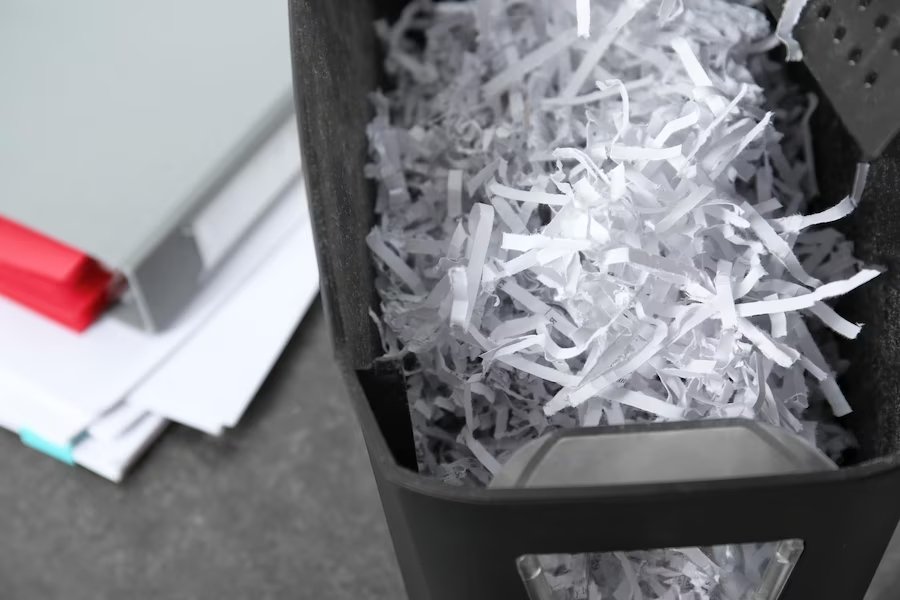The Ultimate Guide to Document Shredding: Best Practices and Tips
In an era dominated by digital technology and data-driven operations, the importance of protecting sensitive information cannot be overstated. Whether you’re a business handling customer data or an individual managing personal documents, safeguarding confidential information is essential to prevent identity theft, fraud, and privacy breaches. Document shredding is a fundamental practice in maintaining data security, providing a reliable method for securely disposing of sensitive documents. In this comprehensive guide, we’ll delve into the intricacies of document shredding, exploring best practices, essential tips, and the importance of implementing effective shredding techniques.
Why Document Shredding Matters
The proliferation of identity theft and data breaches underscores the critical importance of document shredding in today’s digital landscape. Every year, millions of individuals fall victim to identity theft, resulting in financial losses, damaged credit, and emotional distress. Businesses, too, face significant risks from data breaches, including legal liabilities, reputational damage, and loss of customer trust. Document shredding serves as a crucial line of defense against these threats, ensuring that sensitive information is irreversibly destroyed and inaccessible to unauthorized individuals.

Best Practices for Document Shredding
Know What to Shred: The first step in effective document shredding is identifying which documents contain sensitive information and require shredding. This includes financial statements, credit card statements, tax documents, medical records, legal documents, and any other paperwork containing personal or confidential information. By categorizing documents based on their level of sensitivity, individuals and businesses can prioritize the shredding of high-risk documents while minimizing unnecessary shredding of non-sensitive materials.
Invest in a Quality Shredder: When it comes to document shredding, not all shredders are created equal. To ensure optimal security, it’s essential to invest in a high-quality shredder capable of meeting your shredding needs. Cross-cut and micro-cut shredders are widely regarded as the most secure shredding options, as they shred documents into tiny, confetti-like pieces that are virtually impossible to reconstruct. These shredders provide superior protection compared to strip-cut shredders, which produce long strips of shredded material that may still be readable.
Establish a Shredding Routine: Consistency is key to effective document shredding. Establishing a regular shredding schedule helps prevent the accumulation of sensitive information and reduces the risk of data breaches. Whether it’s a weekly, monthly, or quarterly shredding routine, make sure to adhere to the schedule consistently to maintain data security. Designate a specific time or day for shredding activities to ensure they are prioritized and not overlooked amidst other responsibilities.
Secure Document Storage: Properly storing sensitive documents until they are ready to be shredded is essential to prevent unauthorized access. Utilize lockable filing cabinets, safes, or secure storage bins to protect sensitive information from theft or tampering. Ensure that only authorized personnel have access to sensitive documents and that they are stored in a secure location with restricted entry.
Dispose of Shredded Material Properly: Once documents have been shredded, it’s equally important to dispose of the shredded material properly. Secure disposal methods, such as recycling or using secure shredding bins, help ensure that shredded material does not fall into the wrong hands. Consider partnering with a reputable shredding company that offers secure disposal services to safely dispose of shredded material and minimize environmental impact.
Tips for Effective Document Shredding

In addition to following best practices, implementing the following tips can further enhance the effectiveness of document shredding:
- Shred Credit Cards and IDs: Expired credit cards, driver’s licenses, and other forms of identification contain sensitive information that can be exploited if not properly disposed of. Shred these items using a cross-cut or micro-cut shredder to prevent identity theft and fraud.
- Shred Junk Mail: Junk mail often contains personal information,
such as pre-approved credit card offers, bank statements, and utility bills. Shred these documents before discarding them to prevent identity thieves from accessing sensitive information and committing fraud.
- Shred Old Electronics: Hard drives, USB drives, and other electronic devices can store vast amounts of sensitive data, even after they are no longer in use. Properly dispose of old electronics by shredding or using professional hard drive destruction services to ensure that data is irreversibly destroyed and inaccessible to unauthorized individuals.
- Implement a Clean Desk Policy: Encourage employees to maintain a clean and organized workspace by implementing a clean desk policy. This policy requires employees to shred unnecessary documents and securely store sensitive information when not in use, reducing the risk of unauthorized access and data breaches.
- Train Employees on Shredding Practices: Provide training and education to employees on the importance of document shredding and proper shredding techniques. Ensure that employees understand which documents require shredding and how to use shredding equipment correctly to minimize errors and promote data security.
Document shredding is a critical component of data security, offering a reliable method for securely disposing of sensitive information and protecting against identity theft, fraud, and data breaches. By following best practices, implementing effective shredding techniques, and staying informed about the latest trends and developments in document shredding, individuals and businesses can maintain data security and safeguard confidential information. Remember, the ultimate goal of document shredding is to ensure that sensitive information is irreversibly destroyed and inaccessible to unauthorized individuals, helping to preserve privacy and maintain compliance with data protection regulations.
